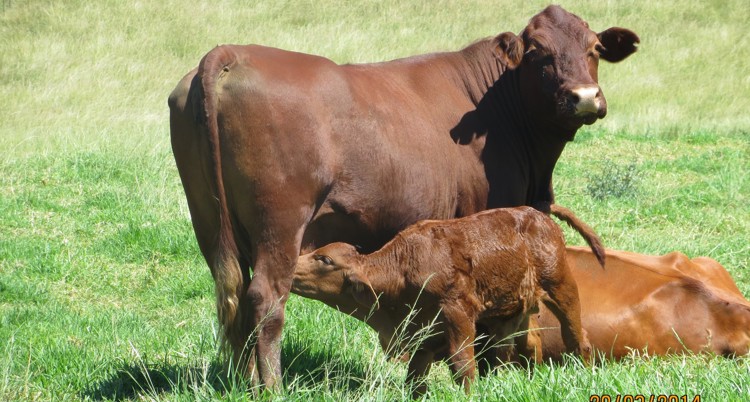Feeding for optimum fertility
Fertility is affected by many factors such as genetics, animal health, stress, nutrition and management. Why, what, when and how much to feed are key questions in fertility management. We should not run blindly, but rather have a strategic approach to make the process economical.

1. Why do we feed for reproduction?
Our goal with feeding is to maintain and increase reproduction, under increasingly demanding performance expectancies. The primary aim of feeding, is to manage the rumen environment so that it remains healthy and fully functional. This increases the efficiency with which the animal can consume the feed in front of it, and provide for its basic nutritional needs. Any further nutritional shortfalls that cannot be supplied by the rumen (mostly during critical periods) will be secondary goal of supplementation.
Therefore, the levels of feeding required for optimal reproduction depend on the production pressure, and the quantity and quality of feed that is available on a farm. Nutrition for optimal reproduction is more successful when it is applied strategically, rather than when only excess feed is added at any given time. Large volumes of feed are not necessary, but feed should rather be used strategically and cleverly.
2. What to feed for optimum reproduction?
Breeds
Not all breeds react in the same way on different feeds. Some breeds produce a better feed conversion ratio, response and results than others. Some breeds will have better results under extensive conditions with less feed, while other breeds will do better on a better and more expensive ration in more controlled conditions.Genetics
Within the same breeds some animals perform better genetically than others. Some ewes always get pregnant during the first covering cycle and have better mothering abilities than others. Good nutrition cannot improve poor animals’ reproduction beyond their genetic potential. Feed can only utilize an animal's genetic potential, and cannot improve it. Do not spend money on expensive feed for poor quality animals. Be strict in the selection for fertility and mothering ability and feed the animals that do perform. The best feed for poor quality animals are finishing rations - get rid of them.System
Completely different nutritional approaches are used in extensive and intensive systems. The same fertility response is not obtained with the same feeding level in an 8 to 9 months lambing pen system than in a 12-month system. In an extensive system we can easily "overfeed" our animals because the nutritional demand is lower, and thus animals become too fat and that is detrimental to reproduction. Intensive systems require three to four times the quantity of feed than that of extensive situations to maintain an optimal level of reproduction and profitability. Knowledge of the specific nutritional needs of animals per phase is of critical importance.Health
Health and nutrition go hand in hand. We cannot feed unhealthy animals – riddled with parasites or with metabolic disorders – which do not have optimally functioning rumens and expect optimal reproduction. An ill-considered feeding programme can cause many metabolic disorders, which can harm health, fertility and the overall economic success of the farming venture. Unplanned and drastic changes in the feeding programme may lead to metabolic disorders like pulpy kidney, acidosis, kidney stones and ketosis.Types of feed
Limit the use of cheap NPN sources during mating time, calving time and lactation. At embrio transplant facilities there is no urea in rations because it affects the pH of the uterus, which adversely affects the attachment of the foetus. The same principle applies on the farm. Just as dairy farmers would not want to see high MUN (Milk Urea Nitrogen) levels in milk, an unweaned calf will also perform better with lower MUN levels in the milk. Be careful with NPN sources during lactation. The sooner a calf is weaned, the sooner the cow will recover and the better its chance of conception will be, increasing the overall conception rate.The use of high starch (grain) rations in young animals has a very negative effect on the fertility of bulls in particular. Fat is laid down in the testes. It affects the heat regulation capacity and can influence fertility negatively up to 50%. In view of this: do we still feed young, growing animals with rations consisting of 60 to 70% grain, and 10 to 20% concentrate? Grains are not bad and are very effective in lactating rations. The solution: feed the correct feed for a specific reason - once again, plan well.
Trace minerals
Know and manage the quantity and type of trace minerals, as well as potential antagonists (agents that may interfere with the absorption and utilization thereof) that may occur in the feed or drinking water (such as heavy metals, high calcium and sulphur levels).3. When and how much to feed for optimum reproduction?
Knowledge of the animals' nutritional needs during specific production phases is essential. These requirements are then balanced with what is available on the farm (grazing, roughage, etc.) and what needs to be supplemented via bought in feed. Rather spend money on feed during critical times when it is sorely needed. Match the feed to the needs of the animals. Better results can be achieved for the same costs.
Figure 1 Energy and protein needs and maximum dry matter intake (DMI) of a 70 kg ewe with multiple births, expressed as an index of the need during early pregnancy
In Figure 1 it seems that a ewe's nutritional needs are three to five times higher during lambing and the first four weeks of lactation than during early gestation (mating time until scanning). These increased nutritional needs must also be provided for with only twice the amount of dry matter that can be ingested during early pregnancy. A very high density feed must be used here to maintain animal health and reproductive ability.
Animals should not be oversupplied with a too high quality feed during early pregnancy, because it can lead to excessive fat deposition. When they need more energy during lambing that fat is broken down to be used as an energy, which leads to ketosis (pregnancy disease).
